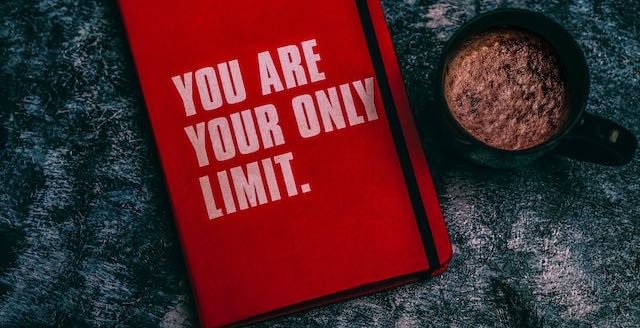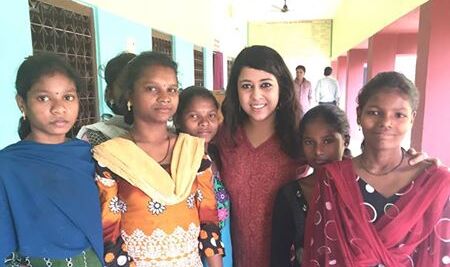Beginning later this week, national elections in India (the world’s most populous country) will happen over 6+ weeks, with results being declared on 4 June. Vignesh Rajahmani and Raghunath Nageswaran look at the context in which the elections are happening, and how Opposition political parties — through formal alliances or individually — continue to challenge the dominance of the ruling Bharatiya Janata Party. (Interested readers should also read ‘India Goes to the Polls 1‘ , published simultaneously.)
As India goes to the polls (19 April–1 June), there is genuine concern in many quarters about whether the national parliamentary elections will be held in a ‘free and fair’ manner. The revelations from an in-depth investigation into the murky Electoral Bonds scheme by independent newsrooms, and the habitual (mis)use of law enforcement agencies by the ruling Bharatiya Janata Party (BJP) government to systematically weaken the political Opposition have rekindled anxiety about the fate of India’s electoral democracy. With the autonomy and competence of the Election Commission of India also coming under the scanner, the upcoming elections might be an inflection point for the Indian Republic.
Control over discourse, access to resources and a motivated cadre of personnel constitute the matrix of electoral success. Any political party that is able to effectively combine these three vectors achieves considerable socio-political dominance. The Hindu-nationalist BJP under Prime Minister Narendra Modi has singularly mastered this formula, and leveraged electoral politics to consolidate its rule across the country. It is an unmistakable harbinger of a much larger ideological project of reconfiguring India as a ‘Hindu rashtra’ — a nation of the Hindus, by the Hindus and for the Hindus. The decision to introduce a religious test for citizenship (argued to be unconstitutional by legal scholars like Abhinav Chandrachud) portends to hamper the spirit of an inclusive Indian ethos. The consecration of the Ram temple in Ayodhya earlier this year — wherein the meaning and imagination of the Hindu Lord Ram was reconfigured to being rivalrous and parochial — is another stride in that direction. These examples foretell a rough undoing of a secular common sense and a bleak future for anyone that does not subscribe to the idea of a blinkered and dominant ‘Hindu rashtra’.
Another issue in the upcoming elections pertains to micro-targeting of voters using technology. A striking example of the way in which the BJP brings the resource-discourse-personnel matrix to bear is the door-to-door campaign conducted by its party cadres across the country to get voters to register themselves on the Saral App (an organisation productivity App developed by the BJP) which allows for such micro-targeting during campaigns. Voters sign up by providing key personal information, for receiving updates about the party and its activities, and other government schemes launched by the party. On the face of it, registration for such an App appears procedural. However, there are at least four concerns: one, the BJP gains access to voters, who are then saturated with one-sided information, hollowing out rationality while keeping agency and freedom intact; two, and as observed by experts, such information can affect the privacy of voters which is fundamental to the health of a democracy; three, it can potentially further the polarisation of voters; and four, government resources can be allocated based on the voting preferences of the people by using the data available to the party when in power.
The BJP’s ability to manufacture and disseminate pro-Hindutva discourse has been bolstered by the willingness of seemingly independent personnel to push majoritarian narratives through all kinds of content creation — social media posts, feature films, pop-music and YouTube videos. The party enjoys privileged access to a strategic resource — official power at the Centre and multiple states — that most other Opposition parties do not. It uses this resource to confer legitimacy upon dangerously problematic canards, especially by legislating them into existence. The proliferation of ‘anti-conversion’ laws in BJP-ruled states to counter an imaginary ‘love jihad’ conspiracy and the granting of entertainment tax waivers by state governments for movies spreading divisive content exemplify the corrosive effects of the BJP’s electoral and ideological dominance on India’s pluralistic societal landscape. Saturating the public discourse both at a personal level and at scale prevents (and at times invisibilises) the opposition to bring to fore issues concerning people’s welfare.
The battle of perceptions is being fought for the BJP by India’s mainstream media that has actively aided and abetted the polarisation project of the Modi government. More worryingly, on the pretext of being neutral observers, some of the largest media houses have openly abdicated their responsibility of holding the ruling party accountable for its deeds and misdeeds. Senior editors running supposedly independent new-age newsrooms present Prime Minister Modi as an unstoppable juggernaut vis-à-vis a floundering Opposition, and have even prepared a wish-list for Modi 3.0 as though his return to power is a foregone conclusion. In an age where narratives and perceptions, rather than reality, increasingly shape electoral outcomes, the odds have been heavily stacked against the Opposition parties.
*
The Indian National Developmental Inclusive Alliance (INDIA), led by the Indian National Congress (INC), the leading national Opposition party with other parties, has put forth a comprehensive basket of welfare schemes for the electorate. Such a positively ambitious exercise is aimed at identifying pathways for redistributing economic opportunities and welfare benefits more equitably at a historical juncture where income and wealth inequality in the country is perhaps at its peak in living memory. The INC has also foregrounded a nationwide ‘caste Census’, coupled with a ‘financial and institutional survey’ as a major electoral promise. The defeat of the INC in three recent State Assembly elections (December 2023), however, has been interpreted by some as a rejection of caste-based mobilisational politics; the BJP, on the other hand, has seen an increase in representation within both Union and State legislatures since 2014.
The election narrative of the National Democratic Alliance (NDA), led by the BJP, has been marked by ambivalence. The Prime Minister has sought to reframe caste mobilisation efforts as counterproductive to the politics of social justice and the welfare schemes as ‘freebie culture’ that renders people unproductive. This repositioning suggests a move away from a politics of identity, patronage and appeasement towards a broader, more inclusive and self-reliant approach. However, the narrative collapses the complex realities of caste and gender mobilisation, and the entrenched economic inequalities, often overlooking the nuanced needs of marginalised communities. Even worse, it constricts aspirations of the subaltern social groups in the name of societal equilibrium; by glorifying individual success stories without addressing systemic barriers, it perpetuates a misleading discourse on socio-economic mobility and justice.
The BJP government has deployed the resource-discourse-personnel matrix to spin narratives on the economy to such an extent that concerns about agrarian distress, stagnant real wages and worrisome trends in India’s labour market are invariably drowned out by vapid claims about the size of the economy and Gross Domestic Product (GDP) growth rates that have, in fact, not translated into meaningful economic outcomes. The recent revelations regarding the donor profiles of the infamous Electoral Bonds Scheme is testament to the legitimation of the state–corporate sector nexus and its obvious less-than-salutary impact on policy-making in the country. The resultant market concentration and enfeebling of price-discovery mechanisms are definite markers of a poorly regulated economy. The preponderance of over-the-top claims bypasses vital issues that should be electorally salient, like pervasive joblessness among educated youth or the post-COVID livelihood concerns of the millions of informally employed workers.
Even as the BJP government has been singing the tune of ‘cooperative federalism’ since coming to power in 2014, it has relentlessly centralised fiscal resources, denying the states their rightful share in tax proceeds and other legitimate dues. Interestingly, such anti-federal acts appear to resonate with the core voter-base of the ruling party, and this ideological predisposition can be located in India’s hegemonic Hindutva ethos which traditionally values order, moderation and discipline over the perceived messy processes of debate, discussion and dissent. The government, exhibiting such an élitist and ‘strongman’ worldview, continues to doggedly discredit the political Opposition. However, growing regional divergence in developmental outcomes and powerfully articulated grievances of ‘fiscal injustice’ by southern states like Karnataka, Kerala and Tamil Nadu have now entered popular consciousness in the region, becoming a central pivot in the Opposition’s counter-narrative in this election.
*
India’s current society and polity, fortified by a deeply ingrained system of graded inequality, have managed to maintain the façade of democracy while hollowing out the substance, particularly in terms of redistributing power more equitably among its citizens. The upcoming elections present an opportunity for reflection and change. The possible electoral outcomes predicted by pollsters have presented a similar range of favourable outcomes to the NDA; however, results of the latest Lokniti–CSDS nationwide pre-poll survey suggest that there is a considerable whimper of discontent with the incumbent regime with 4 out of 10 people expressing dissent. Whether such whimper becomes a crescendo when the electorate casts its vote remains moot and depends partly on Opposition parties’ mobilisational abilities. Despite such predictions, and our own grim account, a few bastions of hope, potential and zeal — like the states of Tamil Nadu and Kerala — continue to resist and persist.
*
The views expressed here are those of the authors and do not represent the views of the ‘South Asia @ LSE’ blog, the LSE South Asia Centre or the London School of Economics and Political Science. Please click here for our Comments Policy.
This blogpost may not be reposted by anyone without prior written consent of LSE South Asia Centre; please e-mail southasia@lse.ac.uk for permission.
Banner image © Tom Chen, Jaipur, 2018, Unsplash.
*







